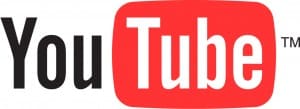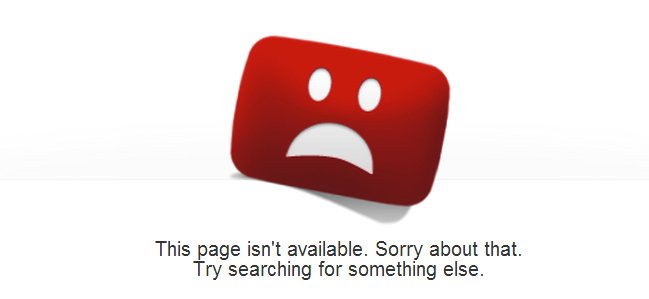Questions Unanswered by the Google/Viacom Settlement
 News has spread today that Google and Viacom have settled their seven-year-old lawsuit over YouTube. This puts an end to both Viacom’s $1 billion claim against YouTube and at least one awkward family Thanksgiving.
News has spread today that Google and Viacom have settled their seven-year-old lawsuit over YouTube. This puts an end to both Viacom’s $1 billion claim against YouTube and at least one awkward family Thanksgiving.
The settlement, without a doubt, was the best thing for both sides. Viacom and YouTube have long enjoyed a cooperative relationship, with Viacom recently striking a deal to rent movies through YouTube and the lawsuit itself had largely stagnated, getting stuck between a lower court that showed strong favor to YouTube’s arguments and an appeals court that seemed to favored Viacom’s.
Rather than wrangle with expensive litigation that had already taken seven years and could have easily taken seven more, it made sense to put the case to rest, especially since YouTube had long since moved on from the practices at issue.
However, with every settlement there is also a missed opportunity. The issues at the heart of the Viacom case don’t cease being relevant now that the case is settled but the opportunity for clarification on the law has ended, at least for now.
So what are the issues at stake? We have to first take a look at the lawsuit and what it was really about.
Viacom v. YouTube: The Short, Short Version
 In 2007, Viacom sued YouTube, which had just been acquired by Google, alleging that, in the early days of the video sharing site, it was a haven for piracy. Though the $1 billion lawsuit amount drew headlines, and sharp criticism, the case got off to a slow start as both sides wrangled over discovery with YouTube being ordered to hand over some 12 terabytes of anonymous user usage.
In 2007, Viacom sued YouTube, which had just been acquired by Google, alleging that, in the early days of the video sharing site, it was a haven for piracy. Though the $1 billion lawsuit amount drew headlines, and sharp criticism, the case got off to a slow start as both sides wrangled over discovery with YouTube being ordered to hand over some 12 terabytes of anonymous user usage.
In 2010, the district court ruled in favor of YouTube, granting a summary judgment that the site was protected by the Digital Millennium Copyright Act (DMCA), which protects web hosts from being liable for infringements committed by users if they meet certain criteria. This ruling was bolstered, in large part, because it was revealed some of the Viacom clips were uploaded by Viacom employees, often trying to hide their activities.
However, Viacom appealed that ruling and, in 2012, The Second Circuit overturned that summary judgment and sent the case back to the lower court. According to the Appeals Court, there was evidence that YouTube’s employees were aware of infringements, including specific videos, and the issues of what YouTube knew and when should be the subject of a jury trial, not a summary judgment.
But, in 2013, the lower court once again granted summary judgment to YouTube, saying that YoUTube did not have any knowledge of specific infringements, did not willfully blind itself to infringements taking place and had no right or ability to control the infringing activity.
That summary judgment was also appealed and was to be heard before the Second Circuit next week. However, with the two sides settling the dispute, that hearing and ruling are not going to happen.
The (Unanswered) Questions at Play
The big questions in the Viacom/YouTube lawsuit is whether or not YouTube, in its early years, qualified for DMCA safe harbor protection.
As mentioned above, that safe harbor protection protects hosts from liability when their users upload infringing content. However, hosts have to qualify for that protection by, among other things designating a DMCA agent, removing infringing works after notification, not doing anything to induce or encourage infringement and removing infringing content that they become aware of through other means.
It’s the latter requirements are particularly core to this case. Viacom alleged that YouTube was either aware of infringing content and failed to remove it or were willfully blind to the infringements that were ongoing. To support this, Viacom showed that, during the early years, over 75% of all YouTube streams contained copyrighted material.
However, YouTube argued that there was no way it could know whether a specific file was infringing and pointed to the efforts by Viacom to upload content to the site, often covertly.
Takedown notices where a host removes content without a DMCA notice being filed are called red flag takedowns, the name being derived from the “red flag” knowledge that’s required to execute one.
However, hosts are almost never held liable for failure to take down content due to a red flag situation. The law had chiseled away at red flag notices making it almost impossible for a host to have such knowledge and even less likely for a rightsholder to prove that one did.
It was the Second Circuit ruling in this case that reaffirmed red flag takedowns and, perhaps more importantly, said that willful blindness, in some cases, can demonstrate knowledge of infringement.
However, the Second Circuit didn’t say whether or not YouTube had violated the law. Rather, it simply said there was enough evidence to support making these issues one for a trial, not a summary judgment.
But rather than moving forward to a trial or to a more nuanced judgment, the judge in the lower court issued another summary judgment in favor of YouTube, scheduling another date for the appeals court that will never happen.
This leaves a lot of questions about what host responsibilities are when it comes to the DMCA, especially when dealing with a large amount of work that may be infringing.
One Question That Was Answered
For all of the ambiguity about what a host’s responsibility is when they might know there is infringement taking place is there was one question answered pretty decisively.
Viacom had, early in the lawsuit, alleged that YouTube did not qualify for safe harbor protection because it did more than merely host files, it also provided transcoding (converting files into a format YouTube can play), streaming playback and generated thumbnails.
Both the lower and the appeals court agreed that those elements do not disqualify YouTube from safe harbor. However, the Second Circuit did remand a fourth element, syndication, back to the lower court. That issue is coming up again, in a different way, with CafePress and it’s DMCA battles.
Still, this case (and other similar cases) do mean that a host is free to convert, stream, etc. content so long as it isn’t defeating any standard copyright protection systems.
Bottom Line
Last week, when the House Judiciary Committee Subcommittee on Intellectual property held its hearing on the DMCA safe harbor provisions, the panelists were asked what they thought about red flag takedowns and the legal climate for them.
The answer was that they were expecting the Viacom v. YouTube case to provide clarification on the subject, noting that it was on appeal to the Second Circuit. That, however, won’t happen now.
To be clear, none of this is to say that YouTube should have won or that it should have lost, it’s saying that knowing why YouTube is in the position it is would have helped other hosts (and other rightsholders) know where the lines are navigate some rather murky areas of the law.
While this is the best outcome for YouTube, Google and Viacom alike, there’s likely no shortage of others who were hoping to learn just a little bit more.
Want to Reuse or Republish this Content?
If you want to feature this article in your site, classroom or elsewhere, just let us know! We usually grant permission within 24 hours.
